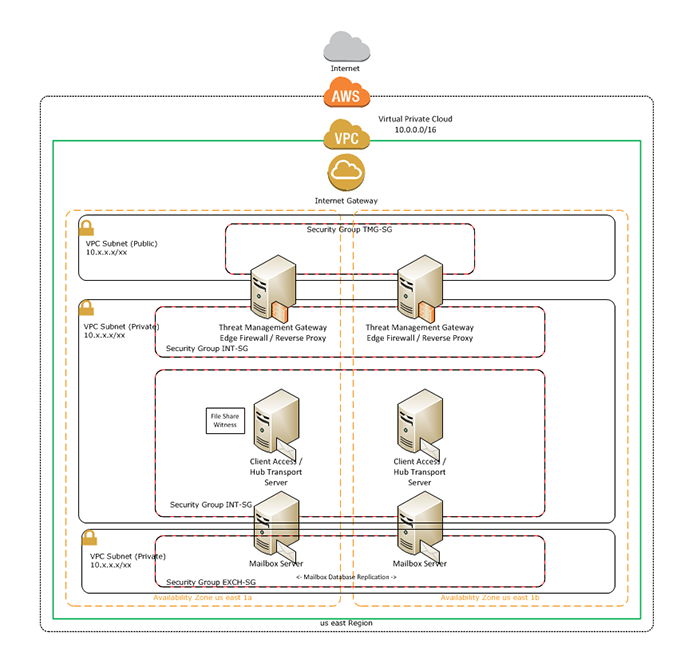
Choice Logistics Case Study
2014
Choice Logistics, Inc. has offered time-critical delivery services for nearly fifty years. The company began in New York in 1964 as Choice Courier, delivering packages for accountants, lawyers, and other professional firms throughout New York City. Today Choice Logistics delivers critical service parts quickly, often within hours, to technology manufacturers and other organizations. Choice Logistics manages a global logistics network of over 800 warehousing locations and has a 99 percent delivery service commitment.


Migrating to AWS was a smooth process. We remained within budget for both the implementation and production environment fees. We embraced the AWS Cloud because its elastic nature allows us to react very quickly to changes in our business community.”
Tom Bentzen
Director of Information Systems, Choice Logistics
The Challenge
Choice Logistics has several distribution centers worldwide, and messaging services are critical to the company’s business. Choice Logistics was using Microsoft Exchange 2007 to manage a messaging environment of approximately 350 mailboxes. The environment was complex to manage and had several potential points of failure. Additionally, Choice Logistics deployed Exchange 2007 in a data center, which meant that it was responsible for hardware, support, and colocation costs. The company wanted to upgrade to Microsoft Exchange 2010 and migrate its messaging environment to the cloud at the same time to achieve higher availability for messaging services, reduce costs and improve flexibility.
Why Amazon Web Services
Choice Logistics was already using Amazon Web Services (AWS) to run its BlackBerry Enterprise Servers (BES) and Citrix virtual application solution. "Using AWS makes it easy for us to resize instances and increase storage without having to go through a lengthy procurement cycle," says Tom Bentzen, Director of Information Systems. "We like the monthly billing model, paying for only the services that we require and the ability to use Amazon EC2 Reserved Instances to reduce our expenses further." The IT organization chose Smartronix, a Premier member of the AWS Partner Network (APN), to help them upgrade to Exchange 2010 while migrating to the AWS Cloud. "Smartronix had the expertise with both AWS and Microsoft Exchange that we needed for this complex deployment," says Bentzen.
Working with Smartronix, Choice Logistics transitioned from Exchange Server 2007 and related Internet Security and Acceleration (ISA) Server 2006 services to Exchange Server 2010 and Threat Management Gateway 2010, and deployed the Exchange 2010 environment to Amazon Virtual Private Cloud (Amazon VPC). In order to keep using a legacy call-center application that relies on Exchange 2007 public folders, Choice Logistics kept one Hub Transport, (which handles mail flow inside the organization) on-premises while moving the rest of its Exchange environment to the AWS Cloud.
The cloud environment connects to Choice Logistics’ primary datacenter using a Border Gateway Protocol (BGP) Virtual Private Network (VPN). All traffic, including external Exchange users, is routed through Choice Logistics’ primary datacenter and then to Amazon VPC by VPN. The environment runs across two data centers in the US East Region. Choice Logistics uses security groups to isolate the customer-facing public network, client access servers, and mailbox servers. Figure 1 shows Choice Logistics’ architecture on AWS.
Smartonix created Amazon Machine Images (AMIs) running Microsoft Windows for use on Amazon Elastic Compute Cloud (Amazon EC2). Amazon Elastic Block Store (Amazon EBS) provides block level storage for eight Amazon EC2 instances. Choice Logistics uses separate volumes for the operating system, applications, and storage; runs Nimsoft on AWS to track server and application availability; and takes advantage of Amazon CloudWatch for basic monitoring.
Choice Logistics uses Amazon Simple Storage Service (Amazon S3) to store AMI snapshots, logs, and mailbox backups. Overall, the environment contains several terabytes of data, including 1.8 TB dedicated to Exchange databases. Mailboxes, which average 1 GB in size, are replicated across Availability Zones in the US East Region for redundancy.
Choice Logistics Architecture

The Benefits
"By using AWS, we can resize mailbox servers based on demand for compute or storage, and change compute characteristics in a matter of minutes," says Bentzen. "We can take advantage of multiple Availability Zones to improve access to mail services, even in the event of a failure."
"We were looking for a cloud provider that could foster a smooth transition from our on-premises resources with minimal risk to our business," he continues. "Migrating to AWS was a smooth process. We remained within budget for both the implementation and production environment fees. We embraced the AWS Cloud because its elastic nature allows us to react very quickly to changes in our business community."
About Choice Logistics
Choice Logistics, Inc. has offered time-critical delivery services for nearly fifty years. The company began in New York in 1964 as Choice Courier, delivering packages for accountants, lawyers, and other professional firms throughout New York City.
AWS Services Used
AWS Partner Network
The AWS Partner Network (APN) is the global partner program for technology and consulting businesses who leverage Amazon Web Services to build solutions and services for customers.
Learn more »
Amazon CloudWatch
Amazon CloudWatch is a monitoring and observability service built for DevOps engineers, developers, site reliability engineers (SREs), and IT managers.
Learn more »
Amazon VPC
Amazon Virtual Private Cloud (Amazon VPC) lets you provision a logically isolated section of the AWS Cloud where you can launch AWS resources in a virtual network that you define.
Learn more »
Amazon S3
Amazon Simple Storage Service (Amazon S3) is an object storage service that offers industry-leading scalability, data availability, security, and performance.
Learn more »
Amazon Machine Images
The Amazon Linux AMI is a supported and maintained Linux image provided by Amazon Web Services for use on Amazon Elastic Compute Cloud (Amazon EC2).
Learn more »
Amazon EBS
Amazon Elastic Block Store (EBS) is an easy to use, high performance block storage service designed for use with Amazon Elastic Compute Cloud (EC2) for both throughput and transaction intensive workloads at any scale.
Learn more »
Get Started
Companies of all sizes across all industries are transforming their businesses every day using AWS. Contact our experts and start your own AWS Cloud journey today.